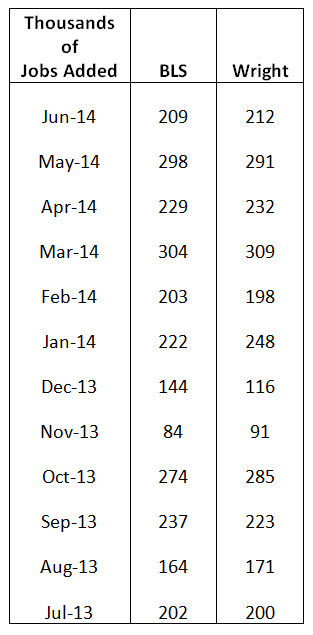There are massive seasonal patterns in employment data. For example, in July, it is typical for the U.S. economy to lose over a million jobs. Adjusting for this normal seasonal variation is essential to interpreting month-to-month changes in employment. The approach for this seasonal adjustment that is presently used by the Bureau of Labor Statistics (BLS) puts very heavy weight on the current and last two years of data in assessing what are the typical patterns for each month.
Jonathan Wright of Johns Hopkins University argues in his Fall 2013 Brookings Paper on Economic Activity, “Unseasonal Seasonals?,” that a longer window should be used to estimate seasonal effects. He finds that using a different seasonal filter, known as the 3×9 filter, produces better results and more accurate forecasts. The key difference in the 3×9 filter is that it spreads weight over the most recent six years in estimating seasonal patterns. This makes the seasonal patterns more stable over time than in the current BLS seasonal adjustment method.
We calculate the month-over-month change in total nonfarm payrolls, seasonally adjusted by the 3×9 filter, for the most recent month. The corresponding data as published by the BLS are shown for comparison purposes. According to the alternative seasonal adjustments, the economy gained 212,000 jobs last month. The Bureau of Labor Statistics reported that the economy gained 209,000 jobs last month. The discrepancies between the two series are explained in Wright’s BPEA paper.

The Brookings Institution is committed to quality, independence, and impact.
We are supported by a diverse array of funders. In line with our values and policies, each Brookings publication represents the sole views of its author(s).




Commentary
Alternative Seasonal Adjustments Still Finds Small Difference From Official Jobs Numbers
August 1, 2014